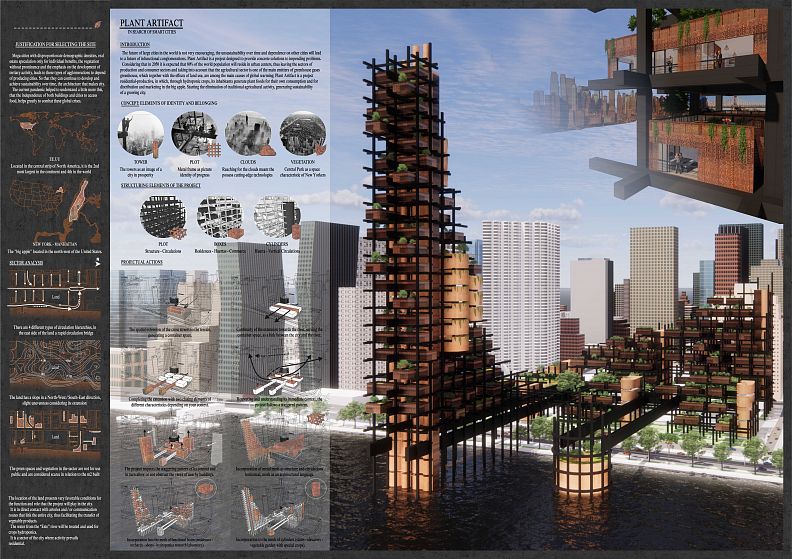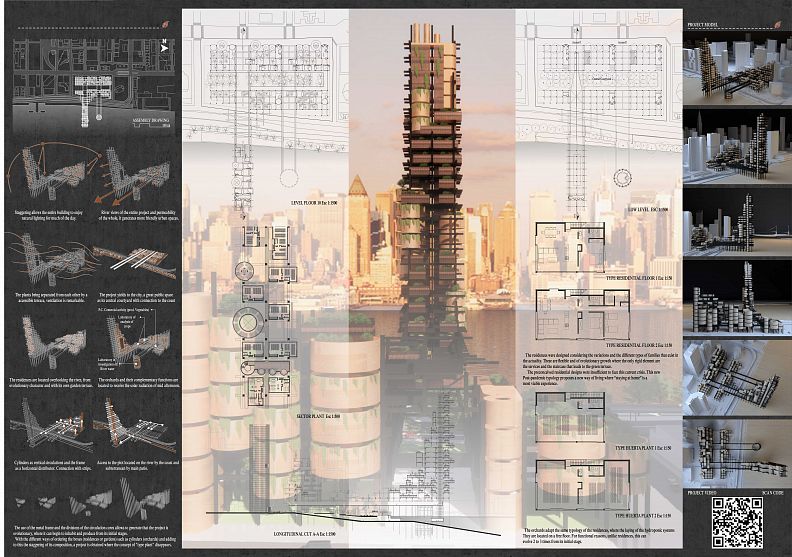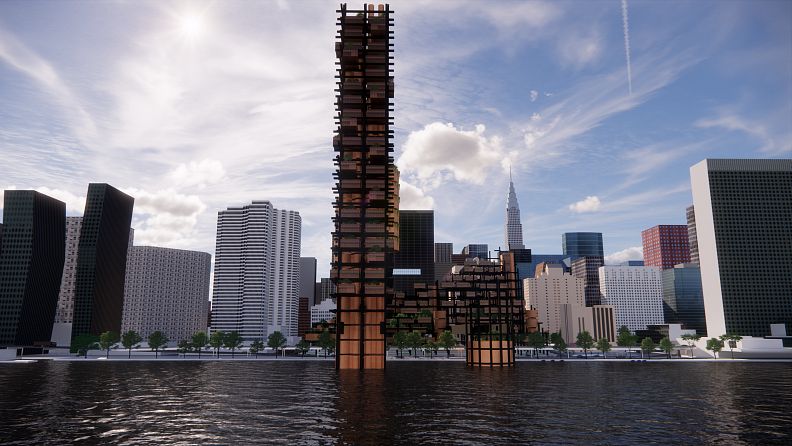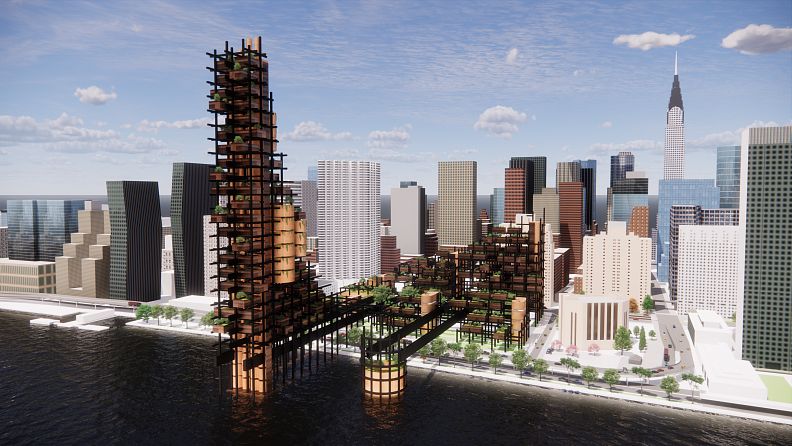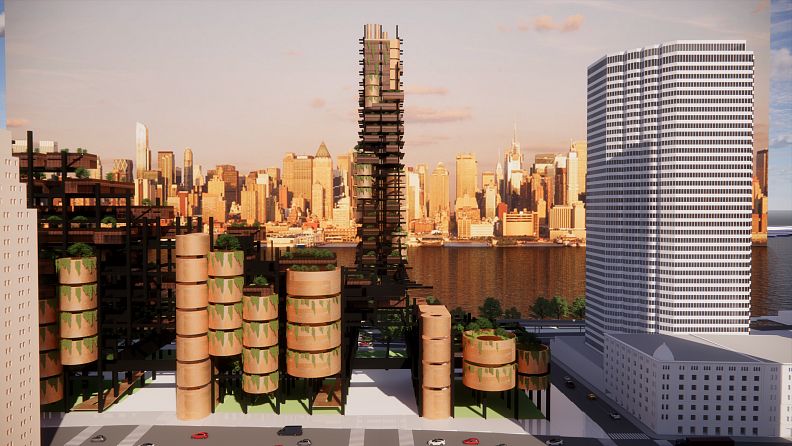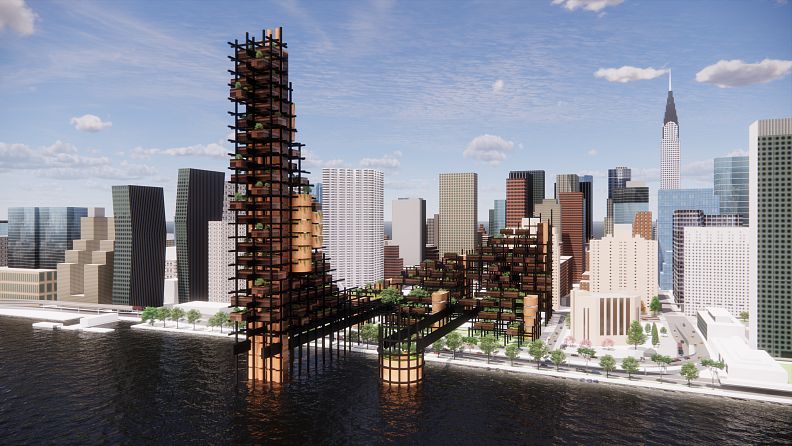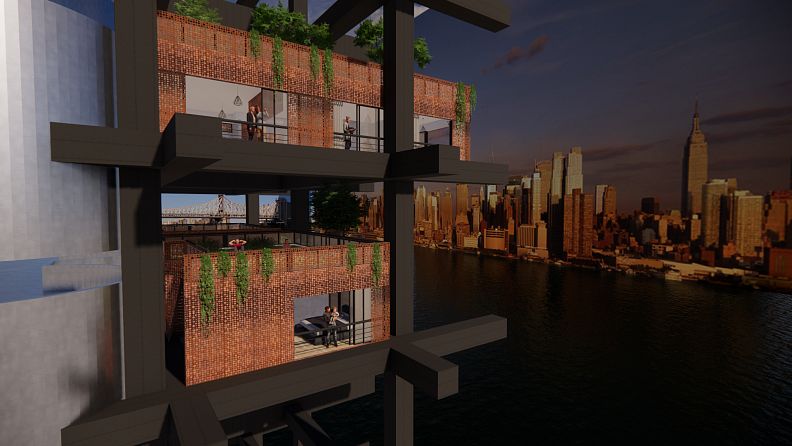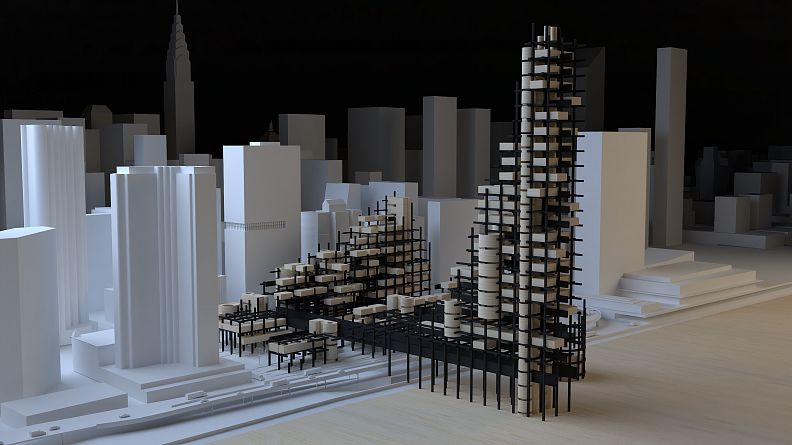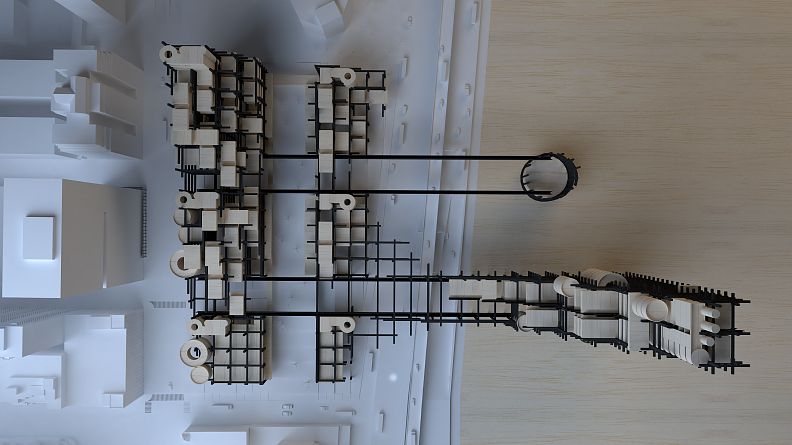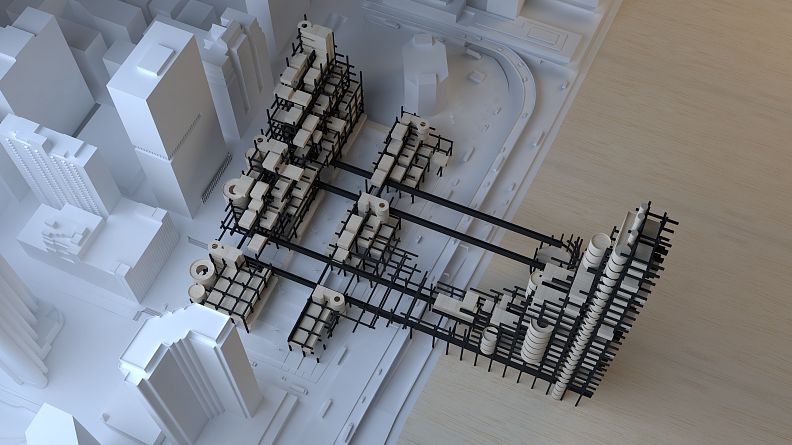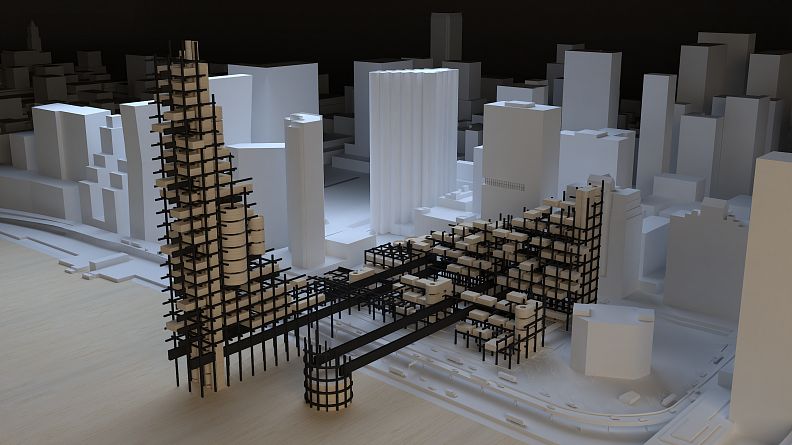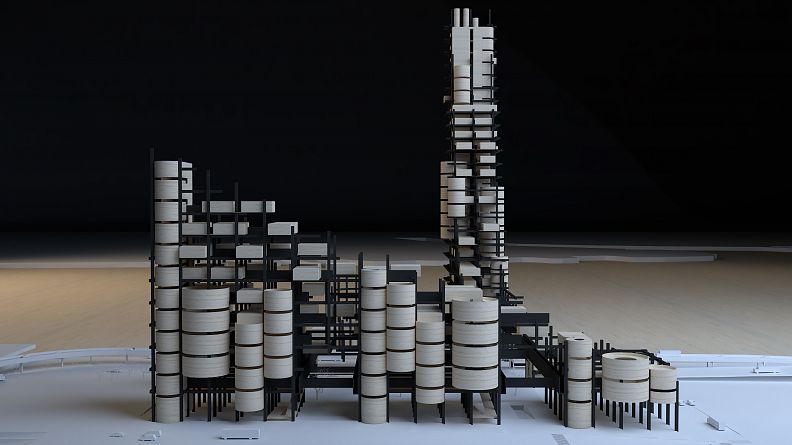PLANT ARTIFACT

Project idea
Mega-cities with disproportionate demographic densities, real
estate speculation only for individual benefits, the vegetation
without prominence and the emphasis on the development of
tertiary activity, leads to these types of agglomerations to depend
of producing cities. So that they can continue to develop and
achieve sustainability over time, the architecture that makes city.
The current pandemic helped to understand a little more this,
that the independence of both buildings and cities to access
food, helps greatly to combat these global crises.
Project description
The future of large cities in the world is not very encouraging, the unsustainability over time and dependence on other cities will lead
to a future of infunctional conglomerations. Plant Artifact is a project designed to provide concrete solutions to impending problems.
Considering that in 2050 it is expected that 80% of the world population will reside in urban centers, thus leaving the sectors of
production and consumer sectors and taking into account that the agricultural sector is one of the main emitters of greenhouse gases
greenhouse, which together with the effects of land use, are among the main causes of global warming; Plant Artifact is a project
residential-productive, in which, through hydroponic crops, its inhabitants generate plant foods for their own consumption and for
distribution and marketing in the big apple. Starting the elimination of traditional agricultural activity, generating sustainability
of a growing city.
Technical information
The use of the metal frame and the divisions of the circulation cores allows to generate that the project is
evolutionary, where it can begin to inhabit and produce from its initial stages.
With the different ways of ordering the boxes (residences or gardens) such as cylinders (orchards) and adding
to this the staggering of its composition, a project is obtained where the concept of "type plant" disappears.
The residences were designed considering the variations and the different types of families that exist in
the actuality. These are flexible and of evolutionary growth where the only rigid element are
the services and the staircase that leads to the green terrace.
The preconceived residential designs were insufficient to face this current crisis. This new
Post-pandemic typology proposes a new way of living where “staying at home” is a
most viable experience.
The orchards adapt the same typology of the residences, where the laying of the hydroponic systems
They are located on a free floor. For functional reasons, unlike residences, this can
evolve 2 to 3 times from its initial stage.
